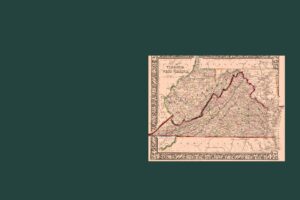
The West and the Promise of Equal Opportunity

Your coeditor for this volume, Patrick J. Garrity, passed away less than a year after you finished the project. Dr. Garrity was a quiet man who never taught for Teaching American History. Would you tell us why you asked him to co-edit the volume?
Pat and I were in graduate school together; Pat studied foreign policy, national security, diplomacy and strategy. I studied American history. We had teachers in common, as well as an interest in John Quincy Adams. Over the years, as I read and wrote about Adams, I corresponded with Pat. He was working as a strategist at Los Alamos National Laboratory when this began; later, he taught at Johns Hopkins and worked on international security issues at the Miller Center of the University of Virginia. As we planned a volume on western expansion covering all US territory that eventually became states—the contiguous continental states as well as Hawaii and Alaska—I thought of Pat. So much of what the US became resulted from the treaties negotiated by Adams during his time as Secretary of State, and Pat understood Adams better than any living person.
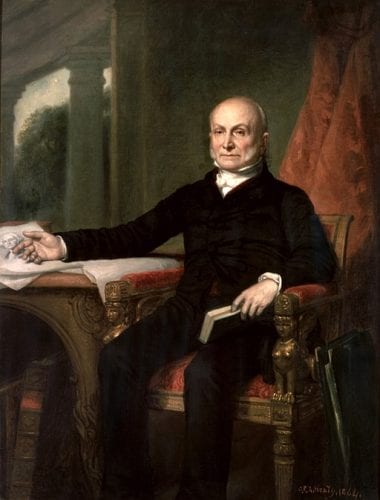
Pat never discussed personal matters, and as we began work, I didn’t realize how ill he was. We agreed that he would cover documents related to treaties with Spain, France, the Indians, and Mexico. I would cover US government/Indian relations and settler/Indian relations; immigration; the character of the West and the way it was “sold” to potential settlers. In the middle of the project, when Pat mentioned that I might have to complete editing some of the documents he’d agreed to edit, I realized he was seriously ill. Yet Pat did finish his part of the work. I offered to write the introduction to the volume, but had completed only the introductory paragraph when I got an email from Pat. He had sketched out a few ideas that I “might find useful.” Reading his “sketch,” I saw it was the perfect explanation of the key issues in the volume; I could not improve on it. I suggested that we simply preface it with my introductory paragraph.
I learned a lot from Pat. He also caught errors in my drafts for the volume. When we finished, it was a pretty clean copy. Pat was able to hold the print volume in his hands before he died. He left behind several books, notably In Search of Monsters to Destroy? American Foreign Policy, Revolution, and Regime Change, 1776-1900 (National Institute Press, 2012) and a fascinating website, The Classics of Strategy and Diplomacy, which covers European and Asian classics and some of his own writing. He also finished a book, United and Independent: John Quincy Adams on American Foreign Policy, that will appear later this year.
The introduction to your volume puts the settlement of the West into a strategic context. Garrity writes, “Geopolitical realities created an imperative for expansion.” What were those realities, and did all of the Founders understand them in the same way?
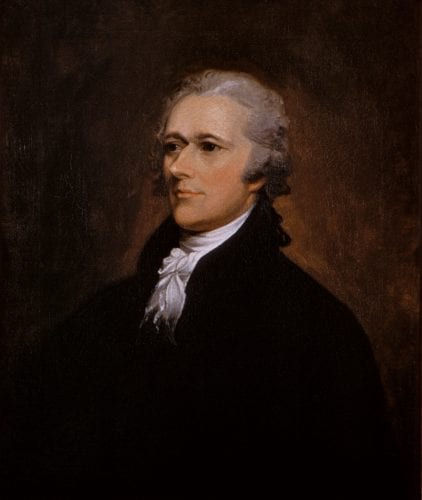
The Founders did not all understand the West in the same way. The Federalists did not want westward expansion. Hamilton wanted Americans to be crowded into urban areas where they would work in factories, although Steve Knott might put it differently! An industrializing economy, Hamilton thought, would build American commercial and military might, mimicking the British model. The Democratic-Republicans, the Jeffersonians, insisted on westward expansion, because they wanted an agrarian economy based on small family farms. Most Americans wanted this too.
Even before Americans declared independence, they were heading west. The West was always the land of opportunity—where Europeans and, later, Americans went for a new beginning. Native Americans were pushed west as a result of the influx of Europeans, as well as their pre-existing inter-tribal competition for land. After the Civil War, many freedmen headed west. This irrepressible westward movement conjoined with geopolitical strategizing to power the expansion.
To speak of geopolitical realities, the 1783 Treaty of Paris, which established the borders of the new nation, left the British and the Spanish with claims in North America. Neither power was particularly friendly to the new republic. Other powers were also vying for the land on US borders. The competition with Europe for land in North America and the Caribbean became the central focus of American foreign policy.
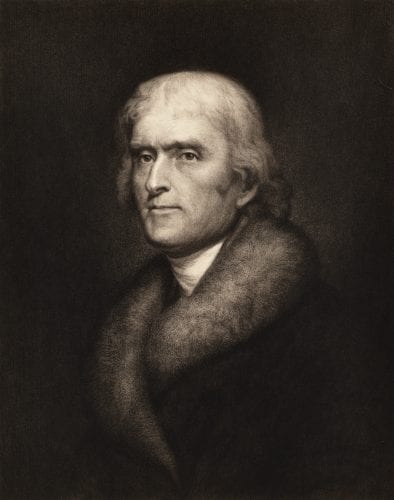
British strength in Canada and on the sea threatened the US, but so did Spanish weakness to the South, since geopolitics abhors a vacuum. If France filled the Spanish vacuum, even Jefferson recognized that alliance with the British would be necessary. Lacking military strength, our new nation needed to manipulate European powers to get control of what North American land they could. Everyone understood that control of the Mississippi River, and therefore of New Orleans, was key. Jefferson did the important work of buying Louisiana from France when Napoleon needed money, resolving many problems.
Other issues were resolved by John Quincy Adams through his treaties with the Spanish, most importantly the Transcontinental Treaty. Adams was not an advocate of an America dominated by an agrarian economy, but he realized national greatness depended on an empire that stretched from sea to shining sea, as we sometimes sing.
Yet Adams, like Lincoln, opposed the Mexican American War, which resulted in the addition of Texas, California and the Southwest to the US.
Yes, because he thought it was pushed by the slave power. One might see Adams’ post-presidential career in Congress as an effort to make amends for having negotiated the Transcontinental Treaty, which brought us territory soon flooded with slaveholders. In Congress, Adams relentlessly opposed slavery. An excellent debater and strategic thinker, he made fools of those who tried to impose the gag rule on him. He befuddled and overcame the slaveocracy in much the same way he overcame the Spanish.
Writing about the movement west, Garrity says, “No government of that time could have erected barriers to stem the tide of a restless, enterprising people.” Yet he says “the Founders intended to manage expansion carefully so that it would be republican in character. . . . Territorial expansion would be peaceful, gradual, orderly, and limited to North America.” Was this vision fulfilled?
That was the intent, true. But you mentioned the war with Mexico. That was followed by “Bleeding Kansas.” The westward movement generated many conflicts with the Indians as well.
The first document in the volume is a report from Henry Knox, Secretary of War, written to President Washington, on relations with the Indians. He criticizes state actions to displace Indians. He compares the actions of Americans unfavorably with those of the Spanish when colonizing Latin America. That’s about as harsh a criticism as he could make! But he made that criticism to show how far we had fallen from the standards that Washington and others wanted the new republic to follow.
Washington initiated efforts, carried on by successive presidents, to deal peacefully with the Indians. Washington felt our young republic had to prove itself stable and capable of maintaining its commitments. Ancient republics had devolved into violence and collapsed. Could our new republic conduct itself honorably? Could it live up to the treaties it signed? Washington, Adams, Jefferson, Hamilton, Madison and Monroe wanted treaties with the Indians to be made on just terms and kept. There was no doubt in their mind that the land would become part of the United States, but that didn’t have to mean constant war with the Indians and their destruction. That was the hope.
The government planned lasting agreements to protect the Indians; those plans were always undone—sometimes by state governments, often by people living in the territories. The federal government never had the power to carry through on all the promises it made in treaties.
Of course, not every American leader wanted to treat the Indians decently—Andrew Jackson and Philip Sheridan show us that. Still, when you read the military order to remove the Cherokee to Oklahoma, which is in the volume, you find that it lays out a plan that conforms to the US military’s current hard-learned understanding of how a military should deal with a civilian population, especially in a counter-insurgency. Yet the military then lacked the logistical capacity to move civilians such a long way. It couldn’t even take very good care of its own troops. The Trail of Tears resulted.
We included examples of treaties with the Indians in the volume. Some would say they were written as fig leaves to cover the government’s real intent. I don’t think that’s true. We include a Supreme Court ruling establishing the principle that the Indian tribes are sovereign nations and must be dealt with as such. Marshall was trying to put dealings with the Indians on the basis of treaties and federal law, making the federal government, a bit more removed from the passions of the people, the government that the Indians dealt with. It is true that many Americans hungered for Indian land, and this was reflected directly in the dealings of the states with the tribes within their borders.
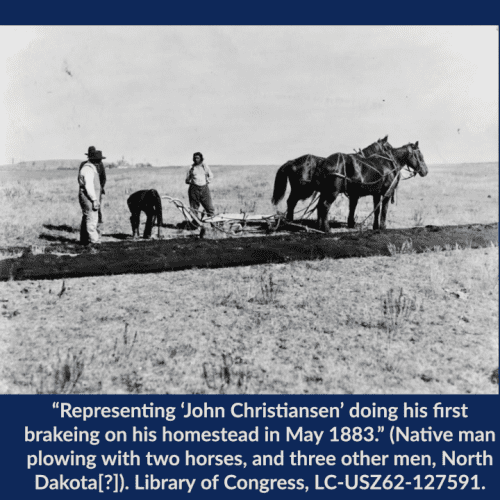
We also include the minutes of a Lake Mohonk Conference of Friends of the Indian in 1887. This group of reformers, many of them former abolitionists, met annually to discuss the Indians’ plight. In 1887, they welcomed passage of the Dawes Act, which split up tribal lands into individual plots and distributed them to Indians who registered with the Office of Indian Affairs. One reformer says, “we failed the freedmen; we must not fail the Indians.” But they understood neither the nature of the land being distributed—experienced farmers would have had trouble with it—nor the Indians’ lack of interest in agriculture. Farming was not their tradition. Many Indians sold their land to non-Indians and tried to live by hunting—even though the land they hunted on before was gone.
There’s a document in the collection about the Ghost Dance movement. Functionally, that movement resembled certain versions of militant Islam today. It was an innovation claiming to be a return to tradition, an effort to preserve a vanished way of life.
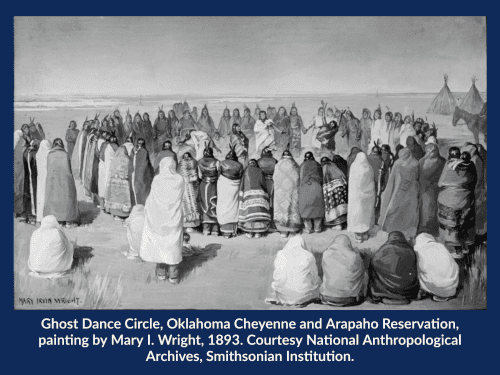
Despite the egalitarian design of the Homestead Act, in the latter part of the 19th century western lands and their resources became commodities bought and sold by industrialists and speculators. To what extent did this negate Jefferson’s vision of a nation of small farmers?
A market in land, like any market, allows land to move to those who can best use it. This did happen, as the excerpt from the memoir of Rachel Calof we included shows. After buying the land of settlers who fled the harsh environment of North Dakota, her family prospered.
The federal government gave the railroad owners large tracts of land to reimburse the cost of building the railroads. There was graft associated with this, but the basic idea of trading land for a transcontinental transportation system made sense. When the railroads began selling the land, they did make claims that seem farfetched today, as you can see in the Atchison, Topeka and Santa Fe poster we included among the volumes’s images. It advertises land in southwest Kansas as ideal for fruit orchards: “temperate climate . . . pure and abundant water!”
Actually, for a few decades following the Civil War, the Midwest enjoyed good rainfall. Yet the aridity of the climate was debated. We include an excerpt from C. D. Wilbur, who claimed that “rain follows the plough.” We also include a map drawn by John Wesley Powell, who marks out the watersheds and a large arid region west of the 100th meridian.
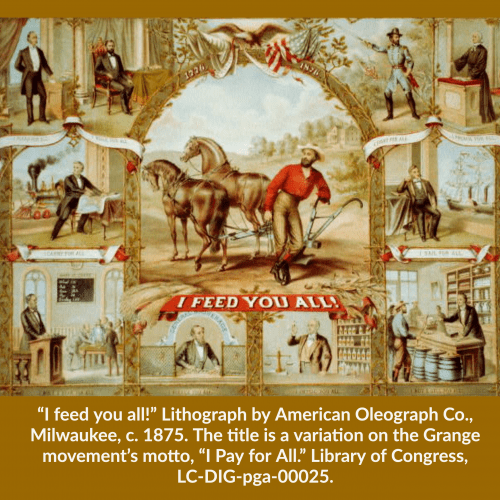
Those farmers who did settle the West objected most to the monopolization of railroad transport for their crops. The railroads had been set up through government aid; yet now, according to the farmers, they were colluding to keep rates high. The farmers wanted government regulation to prevent this. This led to the Grange movement, which began in the 1870s. It was the first of a century of reform movements. In a way, the Progressive movement began in the effort to impose order on the disorderly westward expansion.
For about 120 years, the West accommodated the individual ambitions of Americans hoping to become landowners. But by the end of your collection, Theodore Roosevelt is proposing legislation that would put stewardship of unsettled land into the hands of the federal government, so as to conserve natural resources. Does the history of American settlement of the West help to explain the challenges faced by the American conservation movement today?
Roosevelt’s 1907 speech announced that now not only the land, but also the forests on the land and minerals in it are limited. Roosevelt wanted to manage these resources for the use of future generations.
We include the famous 1890 essay, “The Significance of the Frontier in American History.” Frederick Jackson Turner claimed that the frontier had closed; yet what the West represented remains deeply lodged in the American soul. Its unsettled land provided tangible evidence of equality of opportunity. When that ended, Americans had to find this opportunity elsewhere. We’re still dealing with the consequences. I believe there is more equality of opportunity today than in 19th century America, but it is probably not as clear to people today as it was when any American could look west and see the possibility of a better life.


